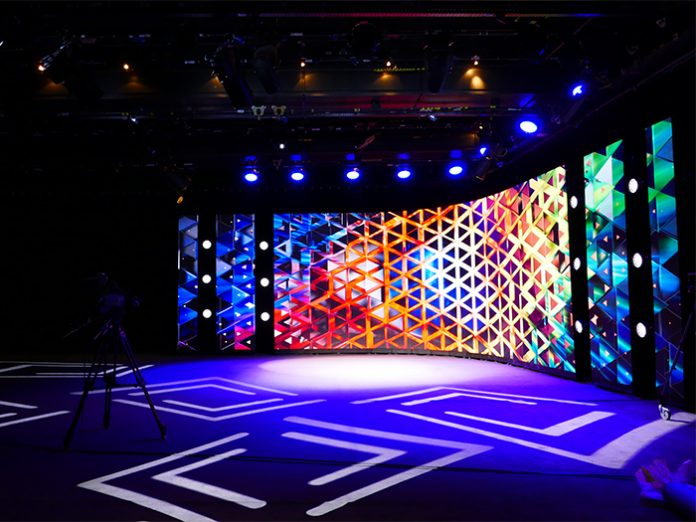Mvision has equipped for rise in creative content production in France amid the COVID-19 pandemic with the roll out of a 300 sq m studio set, which features a curved LED wall, controlled by two Brompton Technology Tessera S8 LED processors.
“Mvision invested in its first LED screens more than eight years ago, and our first cylindrical screen was awarded a prize at the innovation show, Heavent Paris,” said Mvision owner, Meziane Lounis. “Since then, we have been building up our experience and expertise in LED technology, with our latest opening of a studio and investment in Brompton LED processing all part of our long-term development strategy.”
According to Lounis, Mvision has always adapted to the market, with the company’s sole objective being to offer the highest quality products at the best price. For its new studio, the team has built a large 12m by 3.5m LED curved wall made up of Unilumin UPAD III P2.6 LED panels.
“We chose Tessera S8 for our immersive LED stage because of its undeniable product quality and perfect colour rendering. Tessera’s feature set, as well as its latest firmware updates, allows us to adapt well to the demands of our XR studio and offers real quality when it comes to eliminating colour casts in greyscale with its PureTone functionality, or its brilliant colour contrast and colour saturation,” added Mvision Technical Manager, Lounes Lounis.
The new studio has already been used for numerous shoots and events, including virtual conventions for companies such as Total SE, Nestle, Crédit Agricole, AXA, KILOUTOU and others. Thanks to Tessera LED processing, the team has been able to achieve an exemplary image sharpness, so as not to generate a commonly occurring moiré effect; as well as avoid issues such as flickering and multiplexing, as well as banding on the LED screen when the screen is used in the dark.
“We see our new studio at the Palais des Congrès as part of an evolution in event practices. The use of an LED volume allows us to create events which can integrate physical objects within the vast scope of virtual realms, making the productions dynamic and allowing us to change scenes ad infinitum,” concluded Lounis.
“Created out of the necessity to continue facilitating the needs of our customers during the pandemic, we now see our three studios being a permanent part of our client offering, directly supporting the evolution of digital practices in the events sector. In the years to come, one of the major questions we think we will be addressing is achieving the balance between physical and virtual events and productions. Tessera LED processing will support both areas and, in fact, bridge the gap between them, thanks to its full spectrum of vibrant colours for amazingly realistic, visually stunning backgrounds.”






